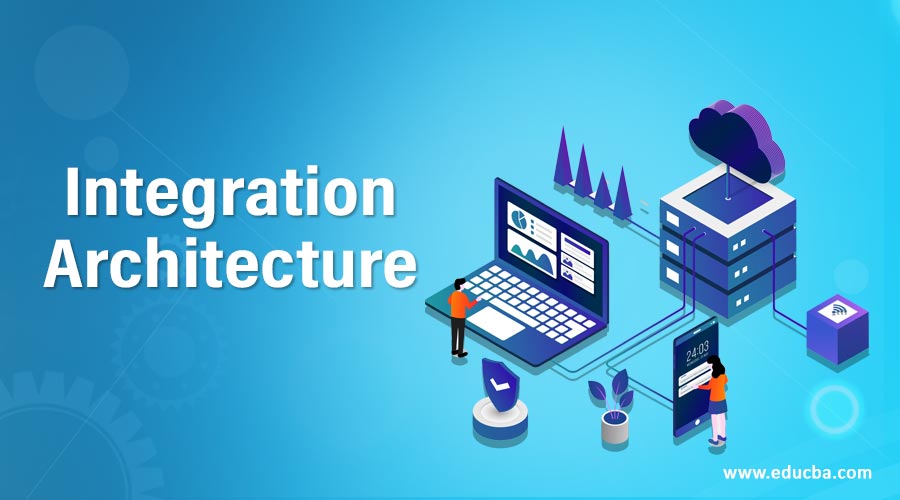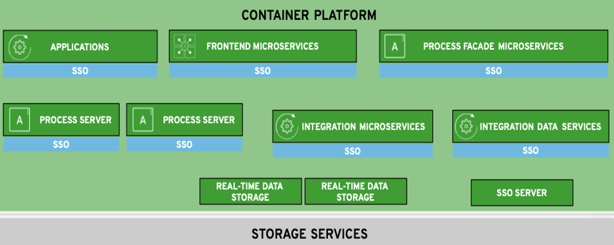Updated April 1, 2023
Introduction to Integration Architecture
The integration architecture is defined as a type of architecture that is used in the IT system, in which different types of software systems make the complete architecture. The literal meaning of integration is breaking down into small pieces. The application uses various tools and techniques to make the complete system that uses various APIs developed for that specific purpose. This is using the APIs, IT resources and middleware that are merging for some specific function and make the complete integration architecture. Each component in the design has a specific function. This is used for business operations is known as enterprise application type integration architecture.
Integration Architecture with Diagram
The integration architecture is a type of structural diagram that is used to manage different types of the subsystem of one complete system and how they are organized to make one complete system. The literal meaning is the blueprint used for technical implementation that includes the complete procedures of how the different parts of the system will be integrated, implemented to form one complete system. This complete system will further used for some specific type of application. The combined system form can use multiple platforms to achieve scalability and enhance agility without increasing system complexity.
The decomposing system develops it into a smaller subsystem based on application requirements. The basic organization for integration architecture is described below:
- Hierarchical: The hierarchical organization contains the sub-system that is managed as per the abstraction and intelligence and the hierarchical dependency of the components of the system.
- Co-operating: The co-operational organization contains the subsystem that is managed based on a functional dependency that is further distributed into the smaller subsystem.
- Distributed: The subsystems are distributed in computer network form. The distributed organization is widely used for the integration architecture and manage the subsystem.
This is mainly made up of container platforms, API gateway, external applications and storage devices. These are the basic that barely used in every integration architecture; however, additional elements can be added to the architecture. The management of the components is very important as the functionality, and other operations can be affected by the system’s management of components. It is important for the system that every component of the system should communicate with each other.
Components of Integration Architecture
Several basic components are involved. Some of them are mentioned below:
1. External Applications
The external application is on top of the integration architecture. The application component directly communicates with architecture. The applications include mobile applications and web applications. The mobile application act as a platform for customers to communicate with the company’s services. The web applications contain several inbuilt applications that include services and websites offered to the organization customers.
2. API Gateway
The API (Application Programming Interface) acts as the gateway between the external application and the services. The access management is done by the API gateway in the integration architecture. The API gateway acts as a security gateway that maintains security and provides limited access to the company customers.
3. Container Platform
The other component of integration architecture is the container platform. The container platform is used to provide one common environment for the developers so that they can manage the applications, services, security, process integration and other integration points using one common platform.
4. Storage Services
The storage services are the key component for the integration architecture. As the name suggests, this component is used to store the data and other important information that the developers use to manage the application and security for the integration architecture.
Benefits of Using the Integration Architecture
The integration architecture is used for both purposes, I.e. business purpose and technical purpose. This is more beneficial for the technical purpose a sit consist of several benefits. Some of them are mentioned below:
1. Reduce Liability for Scaling
When the business grows, it directly increases the need to scale the technology level. For small scale businesses, there is a need for scaling to earn more. The integration architecture provides the benefit that it reduces the liability of scaling the business. The technology is widely used for different type of business like an accounting system, inventory management, and managing backend. The integration architecture makes the architecture consistent. As the new technology adds, the architecture does not affect by the change and can be kept simple.
2. Business Agility Increases
As for performing a business operation, the organization needs to face market competition and maintain its image in the market. By using the integration architecture, the customer base and organization name increases and help to earn more profit by the organization. Using this type of architecture, the investment amount can be reduced, the risk is very low, and time is taken for business activity also becomes reduced.
3. Helps to Scale
The organization widely uses this that deals with huge chunks of data. The data management by quite easy compared to other architectures. The architecture is designed for a complete system that includes a data flow path, and by using the integration architecture for designing the data flow management can be done easily.
4. Increase the Chance to Earn More Profit
As they help reduce the liability, increase agility, and scale the business, the other benefit of using integration architecture increases the change of return made on the business’s investment. As the business operations become simpler by using this architecture, it helps to earn more profit for them that helps the organization to grow its business.
Conclusion
The integration architecture is the basic architecture made up of small subsystems that make one complete system serve some specific purpose. The components communicate with each other so that the functionality of the system can be managed without increasing the system complexity. All the components are properly interconnected with each other.
Recommended Articles
This is a guide to Integration Architecture. Here we discuss an introduction to Integration Architecture along with the block diagram, component and benefits. You can also go through our other related articles to learn more –




